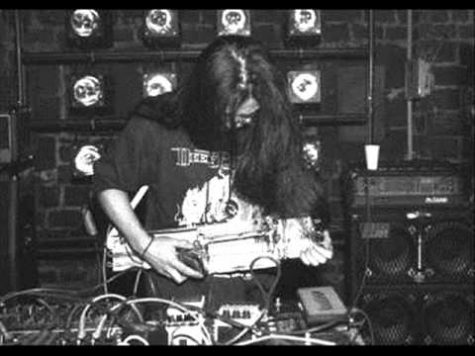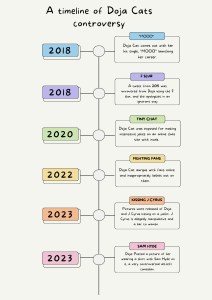The Art Of Noise

November 20, 2020
Experimentation as a whole gives birth to many important ideas and discoveries that might not have been found in the first place. Scientific experimentation has led to countless groundbreaking discoveries, from the splitting of an atom to the creation of penicillin. Culinary experimentation has birthed a variety of new dishes and flavors, the likes of which the world might never have seen. You yourself are constantly experimenting, whether consciously or unconsciously, with thousands of scenarios passing through your head day to day. It would appear that experimentation in all fields is a welcome, and even encouraged thing. However, this is not always the case.
Experimentation within the arts has unfortunately always been looked upon with suspicion. Early experimental painters such as Edgar Degas or Raul Hausmann were lambasted by critics and average viewers alike during their exhibitions. Avant-garde authors such as William S. Burroughs and Allen Ginsberg, which are now regarded as geniuses and visionaries, were scathed by all who were exposed to their early works, to the point of getting their books banned from shelves due to obscenity. And in the case of music, experimental composers such as John Cage or more modern contemporaries such as William Basinski face a musical dilemma, in which the art they create and the experimentation they engage in is scorned and invalidated as “not-music” by the close-minded. I am here today to dispute this musical invalidation. As I see it, to scoff at such experimentation completely closes one off to an entire artistic world, full of composers and musical risk-takers who might expose listeners to beauty that they might not have found on their own.

Oxford Languages defines music as “vocal or instrumental sounds (or both) combined in such a way as to produce beauty of form, harmony, and expression of emotion.” Because noise music and its other experimental subgenres are often characterized by distortion, harsh feedback, and an overall abrasive and atonal atmosphere, it is easy to see why this genre is often classified as “not music”. However, I would argue that at its foundation, noise music meets all the characteristics set forth in the aforementioned definition, and is thus “music” after all. For a start, noise often employs the use of vocals or vocal techniques. The musicians may not sing per se, but vocalization is common within noise compositions. This is also true for instrumentation. Noise composers might not employ the use of typical instruments, instead opting to create their own noise generators that produce electronic signals. However, these generators do in fact produce sound, and can thus be classified as instruments after all. And, just as the definition states, these fields are combined to create a piece.

Now we move on to the less concrete characteristics of music set forth within the aforementioned definition. It is stated that the vocals and instrumentation within a “musical” composition are combined to produce “beauty of form, harmony, and expression of emotion.” These are more challenging stipulations to prove within the sphere of noise music, as it would appear that the entire premise of noise is to compose without tone, creating pieces entirely devoid of melody or harmony. However, these qualifications are not as rigid as it would appear. To begin, according to this definition music must contain beauty of form, or qualities that engage the senses and the mind in a pleasing manner. Crushing layers of static and screaming, hateful vocal lines might not seem pleasing in the slightest on the surface. However, I would argue that the beauty of noise composition lies within its absence of pleasure.
As you well know, a musical piece does not need to be happy or light on the ears in order for it to be considered music. Genres like punk rock and metal have been heavy and caustic from their geneses. These groups don’t sing of pleasure and flowery things either. Their lyrics focus on heavy and occasionally gruesome subjects as well, from mental illness to Satanism. And yet, they are considered “musical groups” simply because of their use of tone. Noise music simply pushes the boundaries of these genres by eliminating the use of tone as well. If we choose to turn our backs on musical compositions only because of an overall lack of tone, we in turn eliminate thousands of important pieces arbitrarily, which in turn limits the art we expose ourselves to.

We now move on to the final qualification of a musical piece; expression of emotion. This particular qualification is quite possibly the easiest to prove. Noise music, while grating and not at all easy to listen to, is rife with emotion. Many noise records under the “power electronics” subgenre are completely centered around explosive, screamed vocals that cover many difficult topics such as sexual abuse, self-disgust, assault, murder, and more. However, rather than trying to glean any shred of optimism or even morbid beauty from these topics, power electronics songs tend to drive them to their very limit, throwing every appalling detail into the listener’s face. Listening to one of these records is a very strange and cathartic experience. It isn’t always pleasurable to hear the pained, wailed details of a brutal murder amidst swirling feedback and pulsating synth drones. However, it is absolutely emotional, and that is what counts.

To conclude, I am puzzled by this arbitrary elimination of noise music from the artistic landscape. Experimentation within any field has consistently bred discovery for centuries. Why must experimentation within the arts such as noise music be written off as simply “not music” and nothing more? Is there not beauty within the absence of beauty? Furthermore, noise compositions fit beneath the umbrella definition of music, as defined by Oxford Languages. This means that they can be classified as “music” by definition. To exclude them from the landscape of music is a decision that is obstinate and unfair. In order for art to progress, we must acknowledge all pieces of all different types, be they beautiful, or crackling with manic electricity.
Notable Noise/Power Electronics Records
Mind Control by Genocide Organ
Pigdaddy by Sutcliffe Jugend
G.R by Deathpile
Bird Seed by Whitehouse
Psychopathia Sexualis by Whitehouse
Estuary English by Consumer Electronics
Hole In The Heart by Ramleh
Instrumentalities by Anenzephalia
Tesco Disco – Heavy Electronics II by Con-Dom, The Grey Wolves
Pulse Demon by Merzbow








